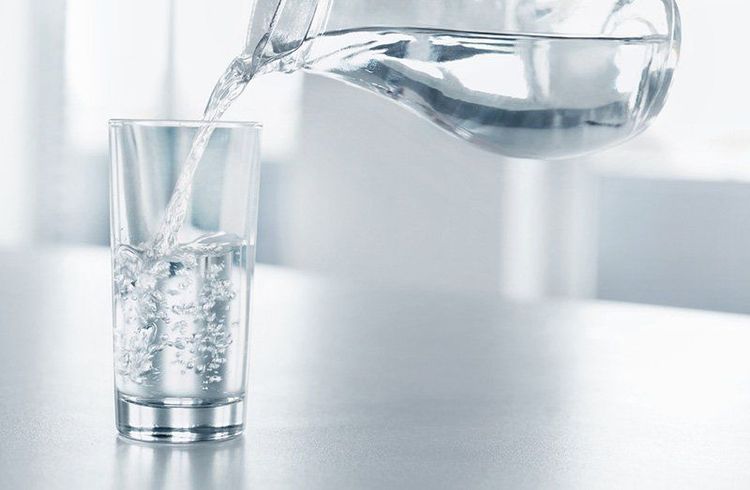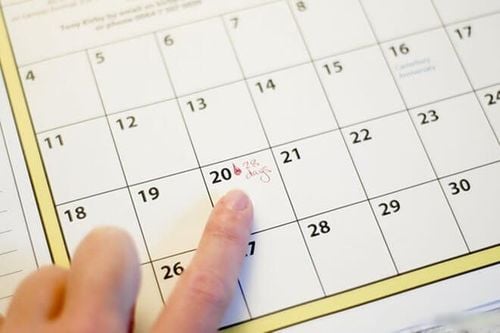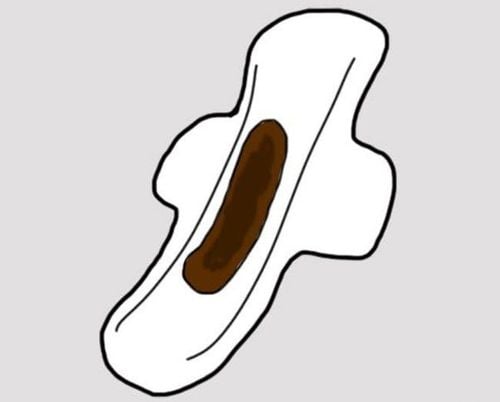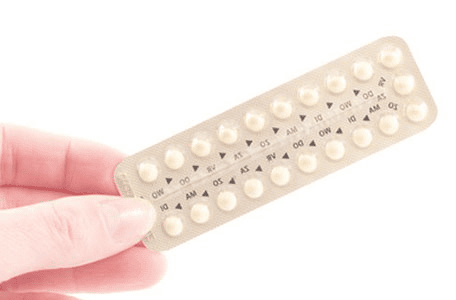This is an automatically translated article.
The article was professionally consulted by Specialist Doctor II Pham Thi Tuyet Mai - Obstetrician and Gynecologist - Department of Obstetrics and Gynecology, Vinmec Hai Phong International General HospitalExercising after childbirth also helps mothers' moods improve significantly. Pelvic floor exercise not only restores pelvic floor muscle elasticity, but also reduces postpartum depression symptoms for women.
1. Postpartum pelvic floor
Pelvic organs include: vagina, uterus and cervix, urethra, bladder, rectum, and small intestine. These organs are supported by the muscles and ligaments of the pelvic floor. The role of the pelvic floor helps keep these organs in place, not falling down when doing heavy work, running and jumping. The pelvic floor also plays the role of opening and closing the openings of the urinary tract, vagina, and anus, helping to control bowel movements and urination at will, sexual activity, and making childbirth easier. These three systems work in harmony with each other, each giving way to the other under the active control of people.The majority of pelvic floor problems that women experience occur after childbirth. Most women who give birth vaginally are more likely to have health problems with the pelvic floor than those who have a caesarean section. When it comes to childbirth, the muscles and ligaments that support the pelvic organs are stretched to the limit, leading to rapid weakness. Then the pelvic functions slip out of the original position and lead to phenomena such as uterine prolapse, bladder prolapse or rectal prolapse; More severe may be stretched, torn, affecting the function of the pelvic floor.
Furthermore, pelvic organ prolapse is the drop in estrogen hormone levels before and after menopause. This makes the body deficient in the amount of collagen needed to support the pelvic connective tissue. This condition will get worse over time and can cause dangerous complications if not treated promptly.
2. Why do pelvic floor exercises after giving birth?
Effectively prevent and treat 80% of urinary incontinence, flatulence, fecal incontinence, urinary incontinence, nocturia. Helps control bowel movements, urination at will. Prevent prolapse of pelvic organs, including uterine, bladder, and rectal prolapse. If it has prolapse, then prevent it from getting worse. Preventing and treating urinary incontinence, gas leakage, and fecal incontinence for pregnant and postpartum women. Improve, increase sexual sensation in both women and men. The right exercises will bring a sense of comfort and confidence in life.3. When to start pelvic floor exercises?

4. Pelvic floor exercises
Exercise 1: Exercise lower abs and pelvic floor muscles Lie on your knees with both hands and knees on the bed or the floor. Adjust your back position to balance and relax your abdominal muscles. Inhale and exhale, while exhaling, simultaneously squeeze and lift the pelvic floor muscles. To put it simply, imagine it's like you're trying to control your body against a gust of wind. At the same time, tighten your abdominal muscles. Hold the tight position for 10 seconds, breathing evenly. Small note: while performing, mothers should not hold their breath or bend their back to achieve the best results. Rest for 5 seconds and repeat the whole movement 10 times. Exercise 2: Hip exercise Lie on your right side, keeping your legs in a state of bending your knees toward your chest. Inhale and as you exhale, squeeze the pelvic floor and lower abdominal muscles. With your legs closed, lift your left knee up without moving your hips. You should not try to raise your knees too high because it is easy to move the hips. Hold for 5 seconds and then lower. Repeat the movement 10 times. Switch to lying on the left side and perform the exercise 10 more times with the right leg. Exercise 3: Cross abs - bridge Lie on your back on the floor or in bed. Bend your knees by sliding your feet into your hips. Inhale and as you exhale, tighten your pelvic floor and abdominal muscles. Slowly raise the bottom of your butt off the floor to the highest position. Hold your breath normally and at the same time hold this position for about 5 seconds. Lower the buttocks back to the original position. Relax your pelvic floor muscles and lower abdomen. Do 10 reps each time. If you want to challenge yourself more, you can try using only one leg to lift your butt while keeping the other leg straight.
Exercise 4: Bird Dog abs and back muscles This is a movement to strengthen the abdominal muscles and lower back, besides other parts such as buttocks, legs and arms are active, helping them We burn more calories.
Your hands are facing forward, resting your hands on the mat, bend your knees so that your shins and thighs (thighs and upper bodies) form a right angle. Raise your right leg parallel to the floor and bring your left hand out in front of you, palm down. Hold your arms and legs straight for about 30 seconds and switch sides. Do this about 10 times. Exercise 5: Reverse abdominal crunch Lie on the ground, legs straight, hands on both sides of hips, palms facing the ground. Bring your legs up so that your thighs are perpendicular to the ground, feet still close together, shins parallel to the ground. Inhale, bring your legs up so that your thighs are almost touching your chin and bring them back to the pose. Do this move 10 times. Exercise 6: Kegel Squeeze the urinary cessation organ, help muscles and ligaments around the vagina, urethra, or rectum to be flexible, improve urinary incontinence. You should do it at least 3 times a day.
Practice in any position and at your leisure, as soon as you remember the contraction and hold movement: perform the contraction gradually to the maximum and hold for 3-10 seconds, rest for 4 seconds, continue to repeat holding the exercise about 5 times for until the muscle is tired and cannot continue to contract. Rest for 2 minutes, switch to quick contractions. Contract the muscle quickly, maximally, and relax immediately afterwards: at least 10 times fast each time or until the muscle is too tired to continue.
5. Body care after pelvic floor exercise

6. Important note when doing pelvic floor exercises after giving birth
Do not be too impatient or exercise too hard If you did not exercise or exercise much during your pregnancy, do not rush to practice because of the pressure to lose weight after giving birth. Wait until the first postnatal visit, usually a month later, when it is concluded that your body has fully recovered, start with gentle exercises, then increase gradually. Also, keep in mind that it takes about 6 months for your body to return to its normal pre-pregnancy and birth, joints and ligaments take 3-5 months to get back together, so be patient and just increase exercise intensity after this time.
Protect your breasts while exercising Although exercising while breastfeeding has no effect on your milk production, as long as you drink plenty of water and don't lose strength, avoid exercises that make your breasts sore, even Sports bras when working out or nursing before training are necessary to protect the breasts during exercise.
Stop exercising at the first sign of abnormality Exercising too hard or too soon can cause more secretions. If you have large red bleeding, or feel pain, exhausted instead of feeling better, you need to stop exercising and see a doctor immediately for a timely examination. Some unusual warning signs you can easily see such as:
Chest pain, headache Dizziness, dizziness Excessively fast heartbeat Swelling and edema of the face, hands and feet Pain in the abdomen, back and back A lot of pain and difficulty Difficulty walking a lot Vaginal bleeding Do not combine diet too soon after giving birth The application of a strict diet right after giving birth, especially while getting used to the role of motherhood is full of surprises and Starting to be physically active again will only make you more exhausted and risk losing milk, reducing milk quality, directly affecting both mother and baby. Instead, breastfeed a lot, because breastfeeding is also a very effective way to lose weight.
Break down the exercise time of the day Having just gone through pregnancy and childbirth takes a lot of energy, if you train too hard with high intensity, you will push your body into a state of decline in both physical and mental health. morale. Therefore, it is advisable to practice only two or more short times a day instead of one time continuously for a long time to ensure that the exercise not only tones the muscles that are stretched due to childbirth, but also strengthens the muscles. increase energy for the body and help you get more comfortable and comfortable.
Situations that should be exercised with caution People in a state of anemia Patients with acute cardiopulmonary disease People with high blood pressure Diabetic patients People with epilepsy People who have used antidepressants The body is easily attenuate.

Please dial HOTLINE for more information or register for an appointment HERE. Download MyVinmec app to make appointments faster and to manage your bookings easily.














